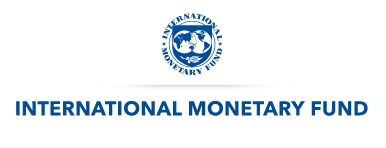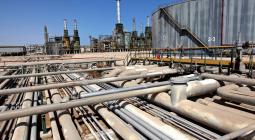Sub-Saharan Africa: A New Shock and Little Room to Maneuver

Washington, DC: A promising regional recovery has been disrupted by the war in Ukraine .
- A promising regional recovery has been disrupted by the war in Ukraine. Last year, activity surprised on the upside, lifting projected growth from 3.7 to 4.5 percent. But the war has introduced a new and tragic development, with the result that growth in 2022 will slow to 3.8 percent.
- The new crisis comes on top of an already-protracted pandemic, and prospects for borrowing costs and global demand are increasingly uncertain, presenting policy makers with a challenging and complicated policy outlook—one with rising needs, greater risks, and fewer options.
- Aside from accelerating vaccination, policymakers face three immediate priorities: i) addressing the local impact of the war; ii) balancing inflation versus growth; and iii) managing exchange-rate adjustment.
- Also, looking beyond the current set of crises, decisive policy action is needed to enhance economic diversification, promote regional integration (including through AfCFTA), unleash the private sector’s potential, and address the challenges posed by climate change. In all these areas, continued international solidarity and cooperation will remain vital.
The recovery in sub-Saharan Africa picked up in the third quarter of 2021 and held up despite the onset of a fourth COVID-19 wave at the end of the year. Estimated growth in 2021 has been revised upward from 3.7 to 4.5percent.
Tragically, however, this progress has been offset by recent events. The Russian invasion of Ukraine has triggered a sharp rise in commodity prices—straining the fiscal and external balances of commodity-importing countries and increasing food-security concerns across the region. As a result, economic activity is expected to slow to 3.8 percent this year , and is subject to an extraordinary range of risks, the International Monetary Fund (IMF) said in its latest Regional Economic Outlook for Sub-Saharan Africa .
“The war in Ukraine has already reshaped the near-term outlook for sub-Saharan Africa,” stressed Abebe Aemro Selassie, Director of the IMF’s African Department. “The shock to global commodity markets will add to inflation, hit the region’s most vulnerable households, exacerbate food insecurity, raise poverty rates, and possibly add to social tensions.
“Higher oil prices may generate a windfall gain for the region’s 8 oil exporters. But for the other 37 countries, they will worsen trade imbalances and increase living costs. Indeed, over the past couple of months we have increased our inflation projections significantly—lifting the regional average for 2022 by a full 4 percentage points, and representing the worst outcome since 2008. This year, eleven countries will face double digit inflation; almost all of these have flexible exchange rates, and almost half of these are fragile.
“For most countries, the new crisis comes at an extremely difficult time—as the COVID-19 pandemic enters its third year, fiscal and international buffers are already under strain, and policy space is limited.”
In this context, Mr. Selassie pointed to key policy priorities. “ On health, the region needs to accelerate further the pace of vaccination to contain the risk of new COVID-19 waves.
“On economic policy, governments will face three immediate challenges over the short run.
“First, shielding their most vulnerable households without undermining debt sustainability . Public debt ratios are at their highest level in over two decades, and many low-income countries are either in, or close to, debt distress.
“Fiscal policy needs to protect vulnerable households from rising food and energy prices, without adding to debt vulnerabilities. Targeted transfers to vulnerable households are the first-best response. But targeted tax reductions or price subsidies (both with clear sunset clauses) may be a second-best alternative, especially for countries with weak social safety nets. For those countries with tighter fiscal constraints, finding the resources to protect the vulnerable may require a reprioritization of spending. In commodity-exporting countries, on the other hand, higher commodity prices may generate a fiscal windfall. But in light of the uncertain outlook and often-precarious fiscal positions, most of these gains should be used to rebuild policy buffers.
“Navigating this complex policy path will be difficult and many countries will require international support. The IMF is ready to help. Last year, the $23 billion allocation of IMF special drawing rights (SDRs) helped finance urgent expenditures during the pandemic. Looking forward, the Group of Twenty’s pledge to channel an additional $100 billion SDRs to vulnerable countries is another important step, and the newly created Resilience and Sustainability Trust (RST) will help ensure that these resources are used to provide critically needed policy support and longer-term funding. But the international community should go further, for example by removing obstacles to the implementation of the Common Framework and allowing for swift and efficient debt restructurings where needed.
“The second challenge will be to contain inflation without undermining the recovery. With rising inflationary pressures and output levels below pre-pandemic trends in most countries, central banks face a difficult balancing act between curbing inflation and supporting growth. Authorities should carefully monitor inflation and be prepared to raise interest rates, if necessary, while maintaining credible and clearly communicated policy frameworks.
“And as the third challenge, many countries will need to address exchange rate pressures stemming from higher global interest rates and increased uncertainty . For pegged currencies, authorities should find the right balance between monetary and fiscal policy to maintain the credibility of the peg. For countries with more flexible arrangements, depreciation can often act as a valuable shock absorber, but may also complicate the outlook for those with foreign-currency debt or where depreciation quickly passes through to local inflation. In this regard, foreign exchange intervention can help offset excessive exchange rate movements, but the scope for intervention is often constrained by low international reserves. In these cases, monetary tightening may be needed to support the currency, even in the face of weak economic activity.
“Looking beyond the pandemic and current geopolitical tensions, creating jobs and meeting the Sustainable Development Goals will require strong, inclusive, and sustainable growth in sub-Saharan Africa,” Mr. Selassie observed.
“To this end, decisive policy action is needed to enhance economic diversification, unleash the private sector’s potential, and address the challenges posed by climate change.
“Climate change, given sub-Saharan Africa’s exposure to weather-related disasters and reliance on rain-fed agriculture, means that investment in adaptation is critical. The global green transition also provides new opportunities in light of the region’s vast potential for renewable energy. International financial support will still be critical to help finance the cost of adaptation, enable sub-Saharan Africa to seize the opportunities offered by the transition to a greener economy, and to ensure fair and affordable access to energy. Such measures may not be easy, but they are essential if the region—and the world—is to benefit from the long-promised African century.





